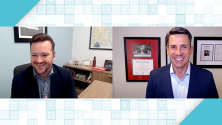When I became CIO at this organization, the CEO asked me to create a set of shared data services for the organization. Until my tenure, IT was simply a distributed point solution subject to the latest business whim. This was a good challenge to hand to an entrepreneurial mind. The question became for me, how do we deploy all our technology services and infrastructure in order to not only support the business today but also where the business is going? After building out a shared service organization, I was delighted when our next CEO said in no uncertain terms, “Not only are we one business and need to act that way, we’re an employee-benefits business, so it’s imperative that we act seamlessly.” This was a call to the organization to not act like a set of different businesses but one seamless business. The era of shared services for the enterprise had truly begun.
To build out an IT shared services organization in the years before this announcement, I led the charge to build out best-in-class solutions for the lines of business but required that they spoke XML to a customer data hub and guaranteed shared data sets for our indicative data. It took a while, but now that transactional applications are getting lighter-weight, we’re holding more and more data centrally.
I hear that a lot of CIOs struggle with being included in business conversations or being a part of how the business is going to start a new initiative. But because of the way that I was brought into the organization and because of what I was able to do on the infrastructure and services layer — and that is not sexy to anyone — I’ve helped to get the businesses the data that’s allowing them to be completely seamless for our clients.
It can be lonely at times
Was it easy? Actually, it was lonely and frustrating for many years because very few people understood what I was trying to do. They would say, “You’re taking my data.” These days, no one talks about “my data” anymore. It has all become “our data.” And the first thing the business does now is to include IT.
The evolving role of the CIO for me means that when the nine executives that run our organization meet once a week, I’m always there, and I’m counted as a coequal among the other executives. IT isn’t a second thought, it’s the first thought for any new project. While I am not often named as the executive sponsor, I am always on any major project. If you’re anxious about seeing your name on a project, you’re kind of missing the point of what your role in the organization is. As a CIO, you’re here to make the organization better, even if the organization has to catch up to the infrastructure you’ve built.
Planning for your replacement
Looking forward, I also set a trend by doing succession planning for myself and grooming a successor. Now the rest of the organization is moving to get succession plans in place. I would advise any CIO who has a five to seven-year window remaining to do the same, especially if you’re looking at big, 36-month projects to start in 2016. In my mind, I’m already setting up the organization that will function when I depart.
For example, I’m hiring a data architect, so the knowledge that I've owned is now moving to another individual. My enterprise architect is moving over to my CTO’s position so that he gets to stretch and make the organization the way that he wants, rather than me being the key person in all strategy. It’s critical for any CIO to put the building blocks in place so that if you do win the lottery, the organization would continue functioning smoothly. No matter how evolved, no CIO stands alone.





